Earlier this week we celebrated Valentine’s Day. So, I thought this would be the perfect opportunity to share with you some of our bird romances on the section. I think generally birds are seen as being a very romantic group of animals, with many birds forming loyal couples. But in fact, that’s not always the case in the bird world. I hope you enjoy reading about the different reproductive strategies of some of our bird species here at Wingham Wildlife Park.
Penguins
Some of our longest-paired couples can be found up at our Humboldt Penguin enclosure. In South America, the Humboldt Penguin’s favourite place to build a nest is in their own poop! They will dig a burrow into it and lay their two eggs inside. Both parents take shifts in incubating the eggs which take between 39-42 days to hatch.
Our Penguin couples include Isobel and Hurricane, Lily and Palamedes, Bubbles and Pippin, Pingu and Mumble, and Kermit and Penny. We also think we have a new romance forming with Dougie and Lucie. We won’t know for sure until they lay eggs and start looking after them together. However, they are showing all the other signs that they are pairing up such as preening each other and sharing the same nest box. As with most seabirds, Humboldt Penguins are long-lived, and usually just lay two eggs per year. So, over their long lives they have many opportunities to try and pass on their genes.
Penguins are a family of birds where it is sometimes assumed that they take the same partner year after year. They are certainly a monogamous species, where they will form long-term partnerships with a single mate during the breeding season, but in the wild there have been documented cases of penguins switching to a different partner in subsequent seasons. Here at the park though, we certainly do see a high level of partner fidelity where they do seem to take the same partner year after year.
Don’t forget you can learn more about our penguin couples on our Penguin Experience too.
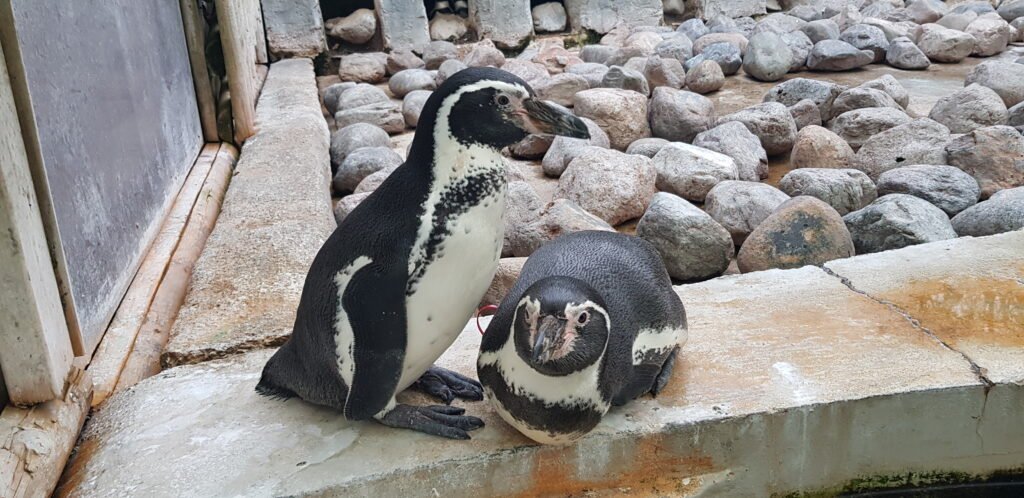
Parrots
Medium Sulphur-crested Cockatoos
Our Medium Sulphur-crested Cockatoos Daphne & Fred can be found in one of our parrot flight aviaries with some of our other rescue parrots. These two are one of our sassiest pairs on the bird section and can be quite the handful during the breeding season. In the wild Sulphur-crested Cockatoos are native to Australia, New Guinea and some of the islands of Indonesia. They build nests in a tree hollow or rock crevice where the female will lay two to three eggs. Both parents take it in turns incubating the eggs and providing for the chicks which hatch after around 30 days. I absolutely adore their courtship dances and bill grinding (which is a sign of affection) to each other. Sulphur-crested Cockatoos are known for their dance moves and can even synchronize their movements to a beat!
Hyacinth Macaws
Also in the parrot department we have two pairs of Hyacinth Macaws. Otis and Dee-Dee who live next to the Tropical House. Blue and Jewel who live next to the Bug Garden. In the wild they would lay their two eggs in natural cavities of trees. The eggs take between 28-29 days to hatch; however, they will usually only look after one of the chicks. One of the reasons this species has struggled in the wild is because their favourite place to nest is in the Manduvi trees of Brazil, Bolivia and Paraguay. Only the older trees develop suitable cavities for these birds to nest in. So, deforestation is a big problem for these beauties.
Goliath Palm Cockatoos
And finally, the last parrot couple I’d like to mention are our Goliath Palm Cockatoos Johnny and Nora. These rather punk-looking birds are native to Australia and New Guinea and build their nests very differently to other cockatoos. They lay their eggs in nests without a roof! Females will also only lay one egg at a time which will take around 30 days to hatch. The courtship display of the Palm Cockatoo is one of my favourites! Males will drum to impress their partner and some even use sticks to play their drum solos. Usually, they will pick a hollow log or stump as their stage, probably because of the better acoustics!? We haven’t seen Johnny using sticks, but he does tap his feet rather proudly when he is showing off to Nora. Especially impressive if he does it on top of a box.
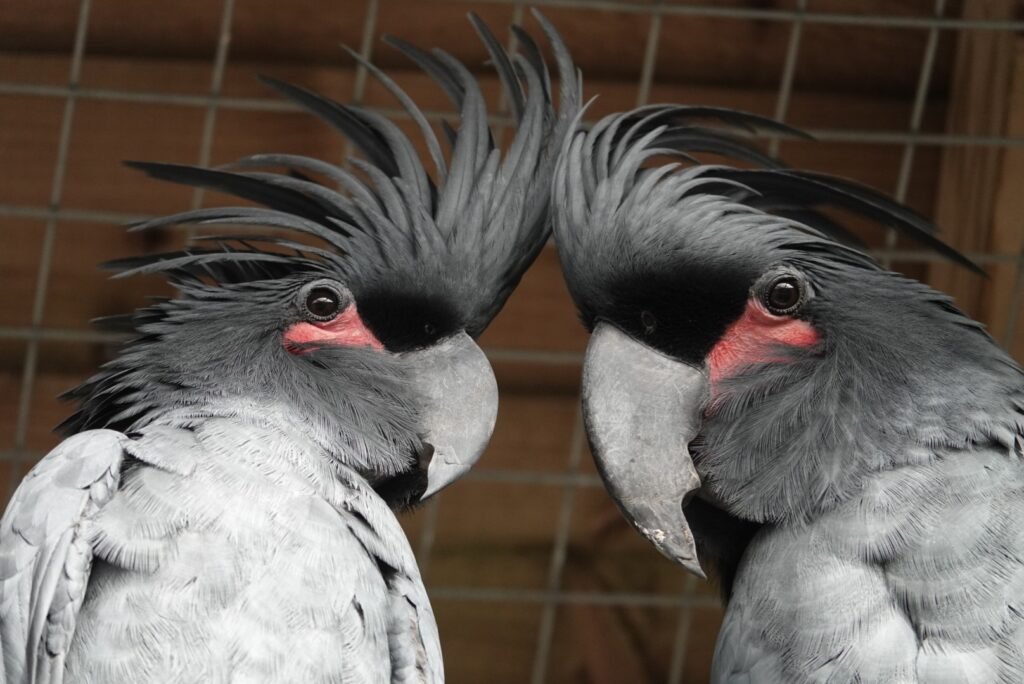
Many parrots are thought to be monogamous where they form strong bonds with one partner for the breeding season. Parrot breeding behaviours are hard to study in the wild though as they are often able to remove any identifiers scientists use to monitor them and often tend to range widely travelling large distances. Certainly, here at the park our parrots seem to choose the same partner year after year.
Storks
We have a pair of European White Storks here at Wingham Wildlife Park called Derek and Cassandra. Cassandra and Derek used to be paired with different partners who have sadly passed away over the years. Now they have formed a strong pair and have started to build a nest together on the lake. In the wild they raise just one brood a year. Females lay between three and five eggs which take between 33-34 days to hatch.
They will then undertake huge migrations south for the winter. Males arrive back to their European breeding grounds before the females and choose the nest. Some males will use the same nest year after year and continue to add nesting material to it. This means some nests can be as deep as two meters and almost five feet wide! Larger nests seem to be sought after and partners may change several times during the early stages of pairing up, especially with younger birds. Breeding will only start once they have formed a stable pair.
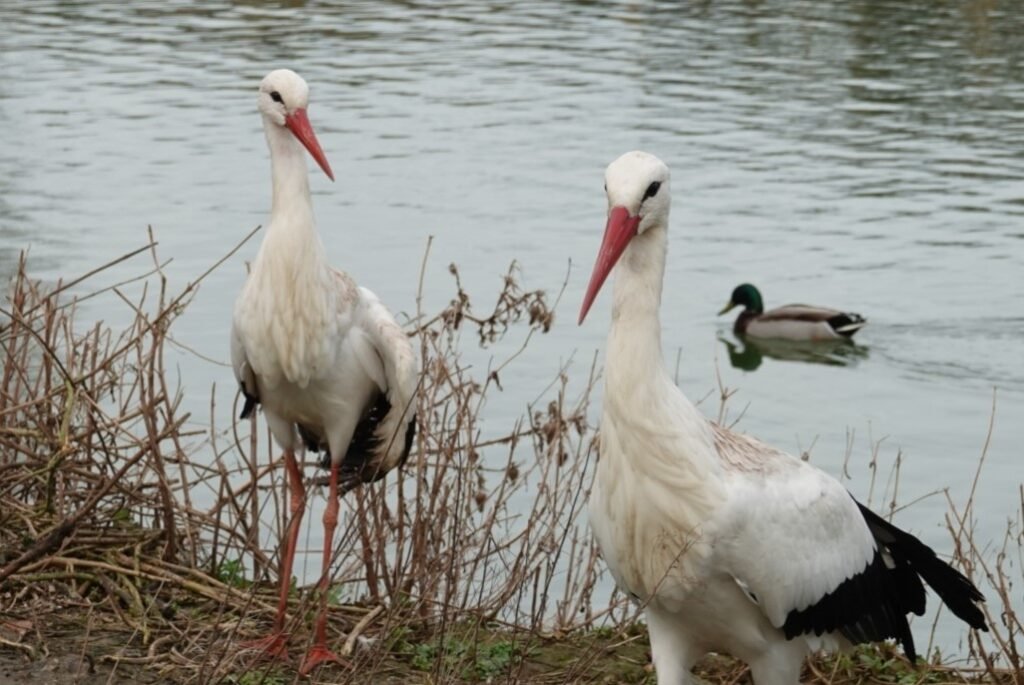
Ducks
Ringed Teals
We have one breeding pair of Ringed Teal at the park called Miguel and Maria. In the wetlands of South America these tiny ducks build their nests in tree cavities which they line with their own feathery down. I always think this is an incredible start to life as the chicks, which hatch after around 29 days and are flightless, will have to jump out of the nest to the ground when they leave the nest. Females can lay up to 12 eggs and both parents will take their turn at incubating the eggs. The male will continue to look after the first brood of chicks. Meanwhile, the female incubates a second clutch of eggs. This strategy is very successful with a pair able to hatch potentially up to 24 offspring in one season. Pair bonds usually start with the male courting the female which consists of lots of preening and flashing their iridescent green speculum (the colourful patch of feathers on a duck’s wing) and swimming in figure of eights around the female whilst vocalizing. Pair bonds often last a single breeding season but sometimes can last for the lifetime of a pair.

White-faced Whistling Ducks
We also have another pair of ducks who are fairly recent arrivals to the park, our White-faced Whistling Ducks Jack and Sally. What fantastic looking ducks! I think the range of this duck is quite interesting as they can be found in sub-Saharan Africa, much of South America and central America. In the wild females would lay 6-12 eggs in a depression in the ground or in reed beds. Both parents will incubate the eggs which take 26-28 days to hatch. The male and female both work hard together to raise the young. They keep them mostly hidden in vegetation until they fledge at around two months old. Pairs are very affectionate to each other and engage in mutual allopreening frequently and communicate with each other using a loud “doot-dee-DOOO” whistle.

Pelicans
We have a small group of Pink-backed Pelicans at the park, and our female Robin, often changes who she decides to breed with each year. This year we think she has mated with Barry, but Maurice is also helping with nest duties. Their nest is a heap of sticks where they lay two to three eggs. In the wild in Africa and Arabia they often nest colonially in trees. However, will also nest in reeds or low bushes as well as on the ground on sandy islands in mangroves. The nests are re-used each year, often until the tree collapses. When the chicks hatch after around 30 days, they eat regurgitated fish by plunging their heads into their parents’ pouches.
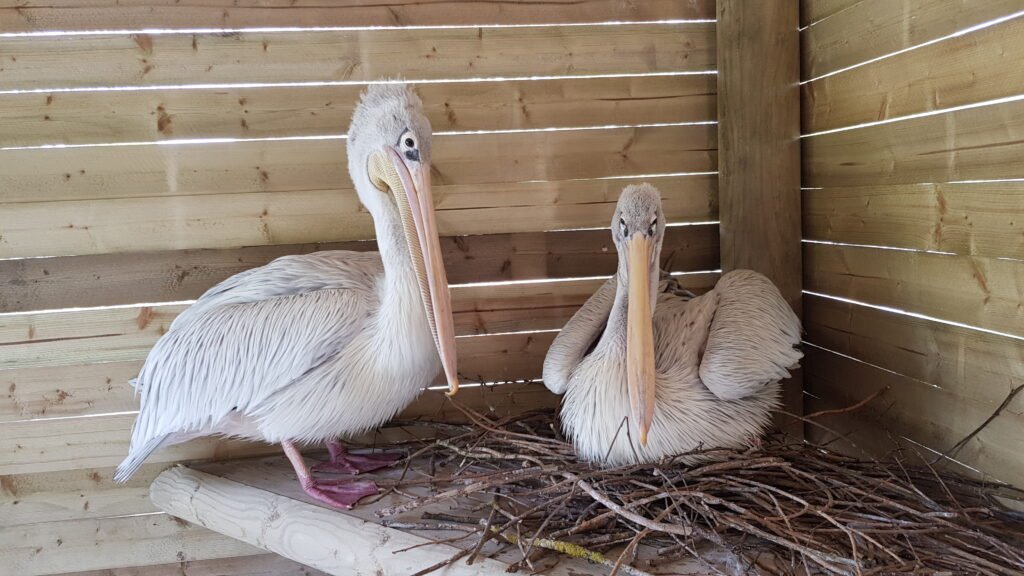
Chickens
We have two groups of free-roaming Polish Bantam chickens at the park. Chickens are a domesticated breed so their nesting depends on how each individual is managed. Here we have one cockerel and his hareem of wives at the top of the park, mainly living around the penguins. And a second cockerel living at the bottom end of the park by the parrots. If another male chicken wanders into the other’s territory they are quickly chased off again. The males don’t mind of course if any of their rival’s hens make the trip up to their end of the park though.
Rheas
Our South American Greater Rheas have a really interesting breeding strategy. They are very sociable and can live in groups up to thirty. Males tend to be solitary in the breeding season and can be distinguished by darker patches on their upper backs and necks. When the breeding season starts fighting between males can be intense. The male will display to the females using his elaborate plumes on his wings. He will dig out a shallow nest and once the female lays around five eggs in his nest she will leave him to it to do the incubating and raising of the young. She will then travel to another male’s nest to repeat this process again and again.
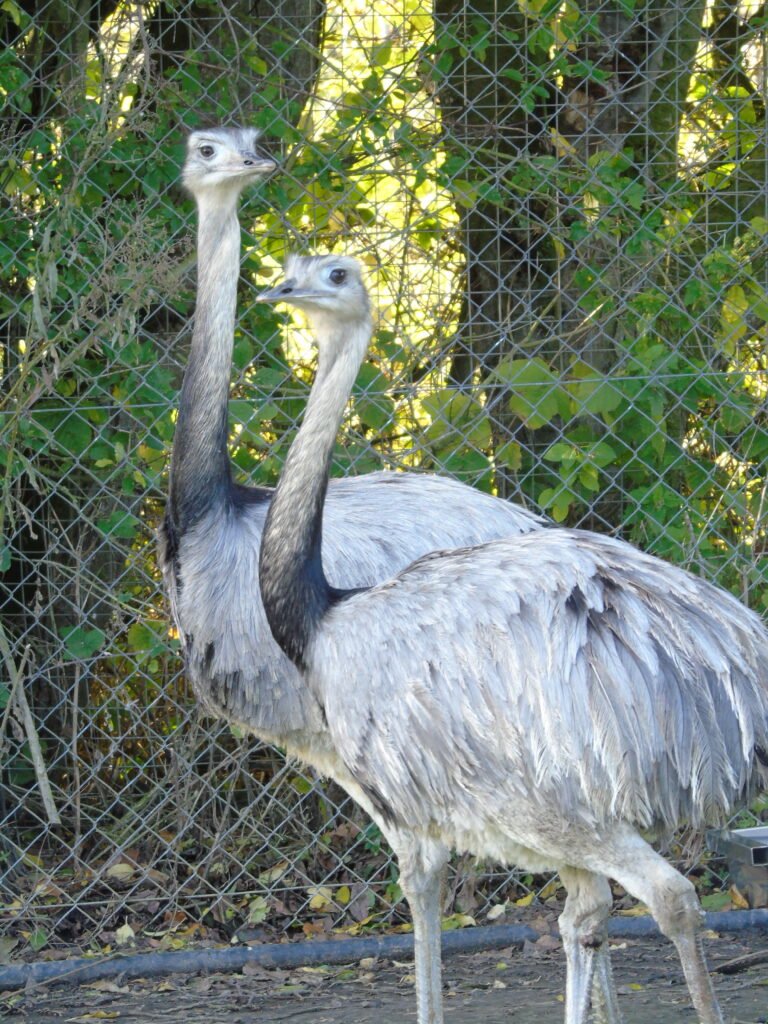
I hope you enjoyed learning about some of our bird couples here at Wingham Wildlife Park and maybe even share a little of my interest in the different ways birds go about the breeding season.
Source: winghamwildlifepark.co.uk





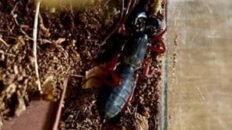
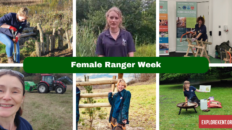
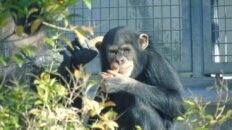
 Please wait...
Please wait...
Add comment